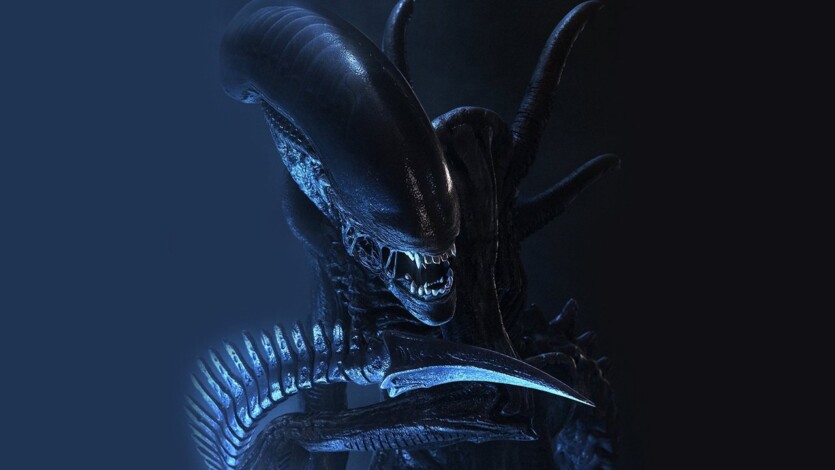
He has acid instead of blood, a disgusting slobbering mouth, and clearly bad intentions. He knows full well that no one in space can hear you scream. According to one malicious android, he is — the perfect organism. But this creature also has a weakness — at the mention of Ellen Ripley’s name, the tubes on his back start twitching anxiously. Without exaggeration, he is one of the most important aliens in the history of cinema.
We continue our series of long reads dedicated to the most popular movie franchises. For the premiere of Alien: Earth, which premieres on August 12, we present the thorny path of the Alien series, as always, with interesting details and honest conclusions.
Content
- 1 Background
- 2 Alien
- 3 Aliens
- 4 Alien 3
- 5 Alien: Resurrection
- 6 Crossover with Predator (2004-2007)
- 7 AVP: Alien vs. Predator
- 8 AVPR: Aliens vs Predator: Requiem
- 9 The Return of Ridley Scott (2012-2017)
- 10 Prometheus
- 11 Alien: Covenant
- 12 Newest projects (from 2024)
- 13 Alien: Romulus
- 14 Alien: Earth
- 15 Conclusions
Background
It all started with an aspiring screenwriter Dan O’Bannon’s desire to create a horror movie about an alien. While still studying at the University of Southern California’s film department, he, along with his classmate John Carpenter and artist Ron Cobb, released a low-budget sci-fi comedy called Dark Star (1974). It was about a space mission of several astronauts, and it also featured an alien creature that looked like a ball. Given the experience of working on this movie and its concept, O’Bannon wanted to show an alien that looked alive.
Meanwhile, he was contacted by the screenwriter Ronald Shousett, who was impressed by Dark Star, with a proposal to collaborate. The latter had just worked on the initial version of the adaptation of Philip K. Dick’s short story We Can Remember It for You Wholesale, but the ambitious filmmakers decided to focus on O’Bannon’s idea, as they were sure that the costs of its implementation would be much lower.
Subsequently, O’Bannon responded to an offer from director Alejandro Chodorowsky to work on a film adaptation of Frank Herbert’s Dune. Although that project was not destined to come to fruition, the trip to Paris was not in vain, as the screenwriter met the artists Chris Foss, Jean Giraud, and Hans Rudolf Giger, whose works made an indelible impression on him.
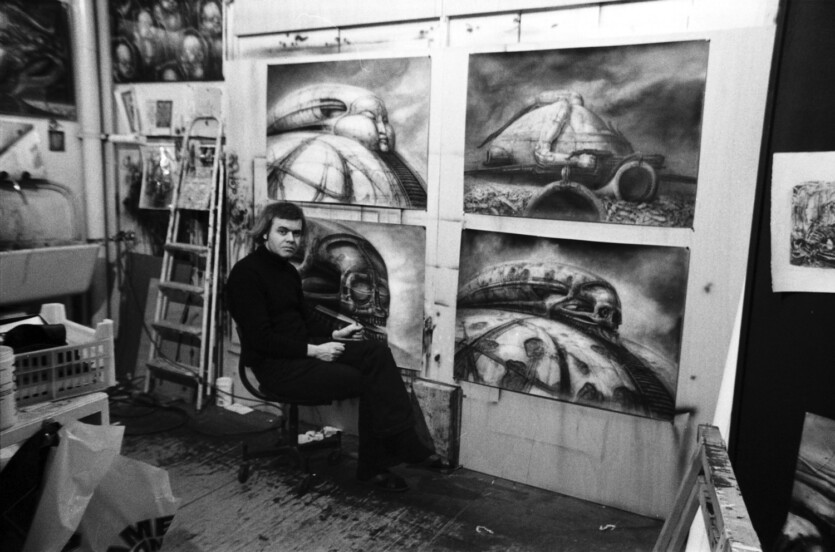
After O’Bannon returned home, the writers continued working on their future space horror. At the same time, they came up with several ideas that would later form the mythology of the series. For example, they decided to call their brainchild Alien instead of the original Star Beast and to place the creature’s embryo inside the victim’s body, from where it then breaks free and thus makes its way to the ship. Ron Cobb came up with the idea of acid instead of blood to make it impossible to use firearms against the creature.
In addition, the authors were inspired by science fiction and horror of the 50s and 60s. As O’Bannon later admitted: “I didn’t steal Alien from anyone, I stole it from everyone at once.” When the script was almost ready, the partners began to offer it to studios with the positioning “Jaws in space”. They had already agreed to work with Roger Corman, but then they came across a company founded by Walter Hill and David Geiler called Brandywine, which had ties to 20th Century Fox.
At the same time, Gill and Gyler began reworking the script, which caused some disagreements between the original authors and the studio executives. However, the storyline of the android Ash was entirely the work of the latter, so their work was clearly beneficial. Fox executives were unsure about funding a science fiction project, but the huge success of George Lucas’ Star Wars (1977) made them reconsider their attitude to the genre. Thus, Alien received the green light from the studio and an initial budget of $4.2 million.
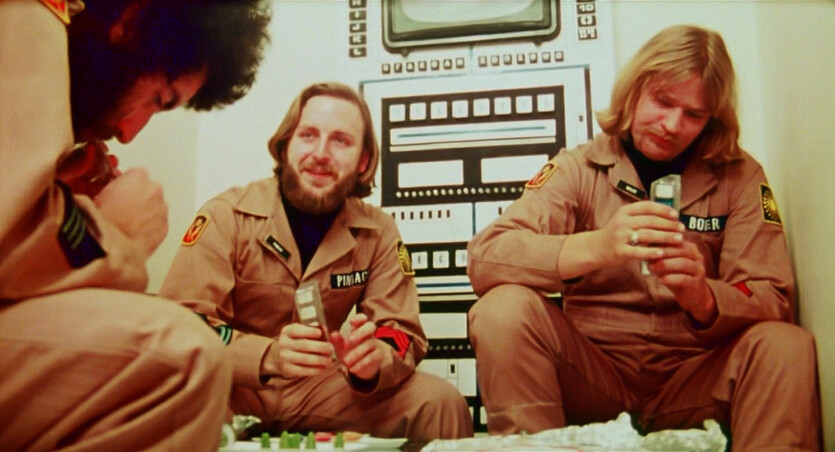
The process was set in motion. It was only a matter of time before the Englishman Ridley Scott, who had attracted the attention of studio bosses with his debut The Duelists (1977), was found to direct the film, and actors, cinematographer, composer, visual effects specialists, etc.
But what was the space monster supposed to look like? This is where Dan O’Bannon’s acquaintance with Giger, whose drawings, particularly in the book Necronomicon, also appealed to Scott. Moreover, after a personal meeting with Giger, he invited the Swiss artist to work on the concept of not only the Alien, but also other components of the sci-fi setting, such as the surface of a planetoid, an abandoned spaceship, and the other three alien forms — egg, face, and lump.
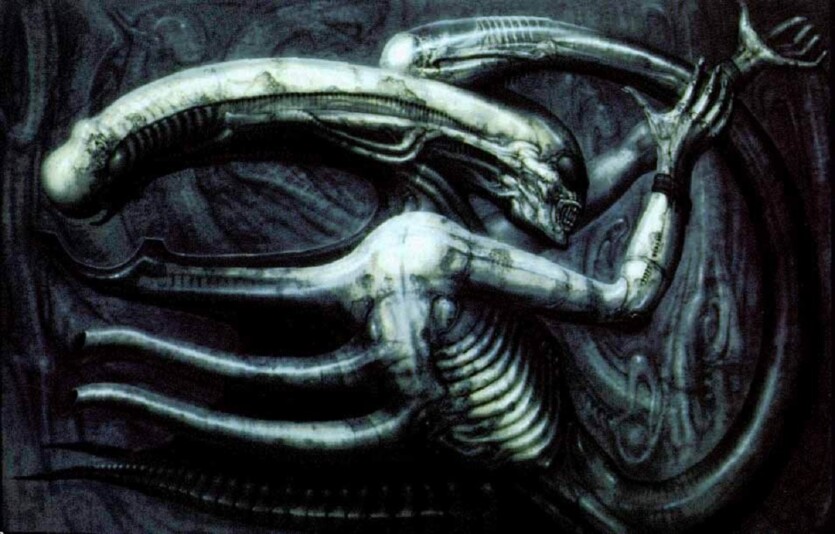
Classical quadrology (1979-1997)
Alien
Year of release: 1979
Director: Ridley Scott
Cast: Sigourney Weaver, Tom Skerritt, John Gert, Veronica Cartwright, Harry Dean Stanton. Ian Holm, Yaphet Kotto, Bolaji Badejo
IMDb rating: 8.5
The Alien type: cosmic
Filming began on July 5, 1978. In the process, the budget grew to $11 million. The film was a commercial success, grossing $143 million worldwide, according to Fox, but the reviews of the critics of the time were mixed (yes, that’s how stupid we are). However, time has put everything in its place: at first, Alien won a number of awards, including the Oscar for Best Visual Effects and the Saturn for Best Science Fiction Film, and eventually became a cult classic.
Scott, Giger, and company have produced a benchmark, full of suspense and frightening images (some of which have a strong sexual overtone), the darkest possible space horror that will make your blood run cold.
The director used the golden rule of horror films, skillfully hiding the appearance of a mysterious, hostile creature in the shadows for a while to stir the viewer’s imagination. For a very long time, two other key characters were in the metaphorical shadows: warrant officer Ellen Ripley, who at first cannot be said to be the main character of the story, and the android Ash, who only pretends to be an ordinary scientist.
Along with Michael Myers and the other “last girl” Jamie Lee Curtis in Halloween (1978), which was released just the day before, the xenomorph and Sigourney Weaver formed another iconic pair of eternal rivals whose confrontation is as fundamental as it is fascinating.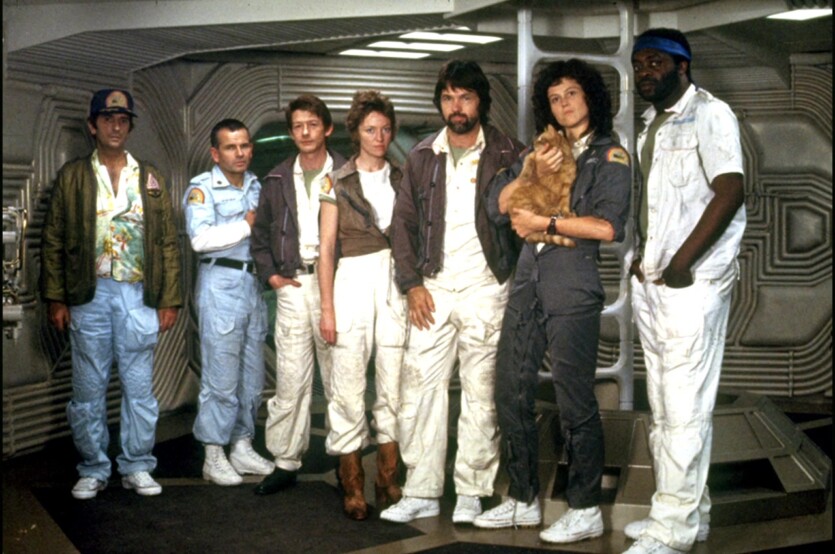
Interesting facts:
- Dan O’Bannon’s Dark Star colleague John Carpenter would also later become famous as the author of the standard horror about an equally terrifying alien — in 1982, his cult The Thing;
- O’Bannon and Ronald Shussett would see it through and, despite years of production hell, would eventually adapt the aforementioned Philip K. Dick story, which would be filmed as Total Recall (1990), starring Arnold Schwarzenegger.
Aliens
Year of release: 1986
Director: James Cameron
Cast: Sigourney Weaver, Lance Henriksen, Michael Bien, Janet Goldstein, Bill Paxton, Paul Reiser, Mark Rolston
IMDb rating: 8.4
The Alien type: action
Brandywine started talking about a sequel immediately after the box office success of the first movie, but Fox chose the “don’t push the horses” tactic. It even came to a lawsuit between the two companies related to non-payment of profits from the original. The reshuffling of Fox’s top executives did not help the situation either: some wanted to launch a sequel, others not so much.
In 1983, Brandywine’s lawsuit was settled and, as a result, Fox agreed to finance the second installment. David Gyler got his hands on James Cameron’s script for The Terminator, and later the little-known filmmaker took up the task of writing the sequel. After a certain pause and another change in the studio’s management, he returned to the development of Alien 2, the script of which grew to 90 pages. Even during the filming of The Terminator (1984), the director and screenwriter did not stop working on the story of the space creature. It was finished on paper in February 1985 and accepted by the studio.
At the next stage, Cameron and his then-passionate and colleague Gail Anne Hurd faced new problems: either the studio did not want Sigourney Weaver back in the project, or the actress herself did not want to join the new battle with the Alien until she saw the script. Fortunately, all the differences were resolved. The project managed to attract Michael Biehn, Lance Henriksen, and Bill Paxton, all of whom came straight from The Terminator.
The sequel differed significantly from its predecessor, in particular in genre, and this was the only right decision, because Cameron went his own way, not wanting to parasitize on the merits of the original, as often happens today. Instead of a slow, creepy space horror, he offered a dynamic and spectacular sci-fi action movie with a bunch of xenomorphs (later the director would do the same with The Terminator sequel, where suspense and anxiety would give way to dynamics and scale).
Those who see the movie as a mindless space shooter will be wrong. In addition to Ripley’s interesting character evolution, the theme of motherhood is a thin red thread running through the plot. No wonder the main character met a girl named Newt, for whose life and safety she was not afraid to take responsibility. And no wonder she has to come face to face with the Queen of Aliens, who, unlike Ripley, takes care of her own offspring. The role of the android also changes dramatically here. And I don’t need to remind you that Cameron is a first-rate action director.
It was a box-office hit: according to Fox’s estimates, the worldwide gross reached $157 million against a budget of $18.5 million. Surprisingly, the high-minded critics were mostly satisfied. Moreover, the film once again grabbed a handful of nominations for prestigious film awards and won two Oscars in technical categories. Sigourney Weaver was also nominated for an Oscar for her work, and this was an extraordinary event given that academics recognized her acting performance in a science fiction film. It was after him that Ellen Ripley entered the pantheon the coolest action heroinesAnd this was at a time when Schwarzenegger and Stallone were already flashing their muscles on the screen.
“Aliens has become a worthy successor to the original and is considered one of the best science fiction films and sequels in the history of cinema. It is now an immortal movie classic.
Interesting facts:
- In the movie «Avengers: Infinity War» (2018), Spider-Man and Tony Stark are inspired by the defeat of the Queen of Aliens to neutralize the enemy Ebony Moe and free Dr. Strange;
- Famous author disaster movies Roland Emmerich called Aliens one of the ten best science fiction films along with the original;
Alien 3
Year of release: 1992
Director: David Fincher
Cast: Sigourney Weaver, Lance Henriksen, Charles Dutton, Charles Dance, Paul McGann, Brian Glover, Ralph Brown, Daniel Webb
IMDb rating: 6.4
The Alien type: psychologically thrilling
Naturally, given the success of the sequel, studio executives were eager to continue the feast. However, the lengths to which the script was put into writing deserves a thriller of its own. At this stage, the father of cyberpunk, William Gibson, screenwriters Eric Red and David Tooey, director Vincent Ward, and the already familiar Walter Hill and David Gyler joined (and left) the project. At some point, Fox turned to music video director David Fincher.
All this script confusion and constant changes of authors led to the fact that the filming started without a ready-made script, having already spent $7 million on the production.
Stylistically and genre-wise, it was a completely different film, strikingly different from both of its predecessors, although it referred to the claustrophobic setting of the original. The creators stepped into the territory of a psychological thriller, focusing on human interaction, which was a big surprise for fans of the series. Critics gave the threequel a cool reception and emphasized the strong visuals, which, however, did not save it.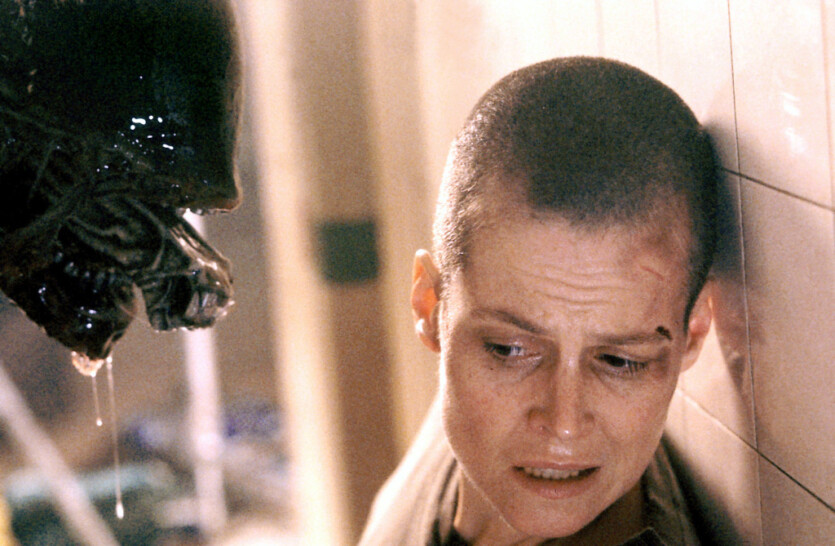
It was obvious that Fincher brought his own unique vision to the franchise (for example, the movie has a scene from the point of view of an Alien, while Predator used this technique in its debut film). Like Cameron, he wanted to move in his direction, but less mainstream. And that’s great, because the series didn’t tread water, but instead offered the viewer something new. And Ripley herself got an interesting character development, which contrasted sharply with the girl with cute curls from the Nostromo days, and eventually a natural ending to her story.
Despite the fact that the third film did not have the same success as the first two (according to Variety, the global gross was $180 million against a budget of $50 million), many viewers still genuinely admire it. David Fincher himself has publicly disowned his directorial debut, accusing the studio of interfering with his plans and preventing him from realizing his ideas. Here is what the director said about Alien 3 in interview with The Guardian:
“I had to work on this project for two years, I was fired three times, and I had to fight for every single thing. No one hated it more than me; and to this day, no one hates it more than me.”.
Interesting facts:
- James Cameron viewed the decision to kill off Bishop, Newt and Hicks as a «slap in the face» to him and the fans of his movie, accusing the studio of handing Fincher a «big mess on his plate»;
- In 2004, 20th Century Fox released a special edition of the classic quadrilogy on DVD. The studio tried to get David Fincher to edit his version of the film, but the director was relentless.
Alien: Resurrection
Year of release: 1997
Director: Jean-Pierre Jeunet
Cast: Sigourney Weaver, Winona Ryder, Dominic Pinon, Ron Perlman, Gary Durdan, Michael Wincott, Keith Flowers
IMDb rating: 6.2
The Alien type: postmodern rethinking
It seemed that after the relative failure and death of Ellen Ripley, the story had come to an end, but no dice. The studio hired screenwriter Joss Whedon (yes, the same one who would publish Firefly and then go into superheroics) to write a new story, and Fox wanted to bring back Sigourney Weaver’s character, or rather, make a clone of her.
Subsequently, the search for a director began; the names of Danny Boyle, Bryan Singer, and even Peter Jackson were mentioned in the list of candidates. In the end, the responsibility for the production was placed on the shoulders of the Frenchman Jean-Pierre Jeunet, who had just finished working on the script for Amélie and was surprised that the producers decided to milk the Queen of Aliens further.
While the third part formally echoed the slowness and claustrophobia of the original, the fourth part tends to be more Cameronian action, only now with warlike space pirates running amok. However, for many people, the tone of Giné’s narration and the games with mixing Alien and Ripleycant DNA were difficult to accept (and for some, on the contrary, this non-standard approach worked). In addition, the audience has already had enough of xenomorphs, and despite the filmmakers’ attempts to change the genre and offer something different every time, Resurrection received mixed reviews from critics and was not successful at the box office, despite the budget that was increased to $70 million.
When Jean-Pierre Jeunet watched the film in honor of its 25th anniversary, he was worried that he would not like it. But no, the French filmmaker was quite pleased with the result. His phrase addressed to all the detractors and haters is eloquent:
“To those who don’t like it, I can say f*ck you!”.
Interesting facts:
- The initial design of the human-alien hybrid included a mixture of female and male genitalia, which were removed during post-production;
- Sigourney Weaver wanted to make the shot of her throwing the basketball into the basket look realistic and insisted on making the shot herself. After a month of training, she succeeded in the first take.
Crossover with Predator (2004-2007)
AVP: Alien vs. Predator
Year of release: 2004
Director: Paul W.S. Anderson
Cast: Sanaa Lathan, Lance Henriksen, Raul Bova, Ewen Bremner, Colin Salmon, Tommy Flanagan
IMDb rating: 5.7
The Alien type: against the Predator
Although Joss Whedon was writing the script for Alien 5, which was supposed to take place on Earth, and at some point James Cameron also worked on the concept of the sequel, their ideas were not destined to come to fruition. Instead, the studio gave the green light to the Alien vs. Predator crossover, and producer John Davis liked the ideas of Paul W.S. Anderson, who had successful video game adaptations Mortal Kombat (1995) and Resident Evil (2002), as well as, most importantly, the space horror Event Horizon (1997).
Anderson was inspired by the Dark Horse comic book series of the same name, the works of the Swiss writer Erich von Deniken, the story At the Mountains of Madness by H.P. Lovecraft and Aztec mythology. The public’s interest in the idea was also fueled by the Alien skull, which flashed in Predator 2 (1990) as one of the yautja trophies. A year earlier, another ambitious crossover with two slasher icons, Freddy vs. Jason, was released, and despite angry reviews from critics, the film performed well at the box office.
However, Alien vs. Predator could not boast of even such achievements: the reviews were even more angry, and the box office was much more modest relative to the budget. The crossover even snagged a Golden Raspberry nomination in the Worst Remake or Sequel category.
The meeting of the two iconic monsters on the screen was supposed to be a real treat for fans of both franchises (admit who you were rooting for), but Anderson failed to live up to the fans’ expectations. The PG-13 children’s rating didn’t add to the joy. The slogan of the movie “No matter who wins. We’re going to lose” was not a lie — the audience really lost.
To be fair, Anderson’s film also has some spectacular scenes that can brighten up the overall impression of what you’ve seen. And in some moments, it’s a really worthwhile movie, and compared to what comes next, it’s almost a masterpiece.
Interesting facts:
- According to Paul W.S. Anderson, Arnold Schwarzenegger was ready to reprise his role as Dutch from Predator in a cameo, provided he lost the election for governor of California. But, as you know, Iron Arnie won the election. Moreover, he appeared in a short scene in another movie — the action-adventure Around the World in 80 Days, which was released a few months before the premiere of AvP;
- For the sake of the opportunity to bring the iconic aliens to the battlefield, the director refused to produce Resident Evil: Apocalypse, which premiered in the Ukrainian box office just a few weeks after Alien vs. Predator.
AVPR: Aliens vs Predator: Requiem
Year of release: 2007
Directors: Greg and Colleen Strauss
Cast: Stephen Pasquale, Reiko Ilsworth, John Ortiz, Johnny Lewis, Ariel Gade, Kristen Gager, Sam Tremmell
IMDb rating: 4.6
The Alien type: Bulldog and rhino mix
The sequel was directed by the brothers Strauss, authors of commercials, clip makers, and heads of the special effects company Hydraulx. They pitched the idea to Fox before the first movie, but it didn’t work out then. It would not have worked out better now: Requiem rightfully received devastating press and two Golden Raspberry nominations. Even the return of the R-rating did not help. Undoubtedly, this is the worst feature film of all those featuring Alien or Predator.
Things were going a little better at the box office, but it was obvious that it was time for the studio bosses to stop trusting the movie monsters dear to the hearts of fans to just anyone. As well as interfering in the film process and radically influencing it.
Interesting facts:
- While working on the film, the Strauss brothers expressed plans for a sequel, but with the reception of their film, this was out of the question. Although last year, the director of Romulus, Fede Alvarez said told Deadline that he’s ready to work on a third round of confrontation, joining forces with Dan Trachtenberg, who currently oversees the Predator franchise;
- It is in this movie that we are first shown the planet of the Predator.
The Return of Ridley Scott (2012-2017)
Prometheus
Year of release: 2012
Director: Ridley Scott
Cast: Noomi Rapace, Michael Fassbender, Charlize Theron, Idris Elba, Logan Marshall-Green, Guy Pearce, Rafe Spall, Sean Harris
IMDb rating: 7.1
The Alien type: philosophical
Ridley Scott has long wanted to create a story that preceded the events of the first movie and explained the origin of not only the Alien, but also the Engineers. John Spates joined the screenwriting team, who was later replaced by Damon Lindelof. Despite the fact that the action formally took place in the Alien universe, Scott and Lindelof produced a completely different kind of movie, in many aspects very far from what had happened in the franchise before.
Scott admitted that “during the creative process, a separate universe with its own mythology emerged,” so the xenomorph itself turned out to be superfluous at this party (instead, there are several new creatures in the frame). In addition, the founding father of the franchise saturated the action with religious, philosophical and existential overtones, wrapping it all up in the wrapper of an expensive entertainment blockbuster with a top-notch cast.
Many viewers were simply not ready for this approach and for a sharp change in the franchise’s development vector. At the same time, Prometheus looked like a very attractive and interesting film in terms of its concept, but its realization raised many questions. Now we know why — according to Ridley Scott’s interview with Deadline last year, the reason for the shortcomings lies in the fact that the director and the people involved in the project were not sufficiently focused on their work. In particular, the English filmmaker referred to his busy schedule at the time, which prevented him from paying more attention to Prometheus.
“I was talking to a great screenwriter, Damon Lindelof, and we reconstructed the resurrection of the era with «Prometheus» and how it evolved from «Alien». But by then we had fallen asleep at the wheel. Advisors who, frankly, are no longer with me, were asleep at the wheel. And I partially blame myself for the failure,” Scott said.
Despite controversial reviews from many viewers, Prometheus has been well received by critics and performed well at the box office, so this sci-fi blockbuster cannot be called a failure. Although it is not an unqualified success either.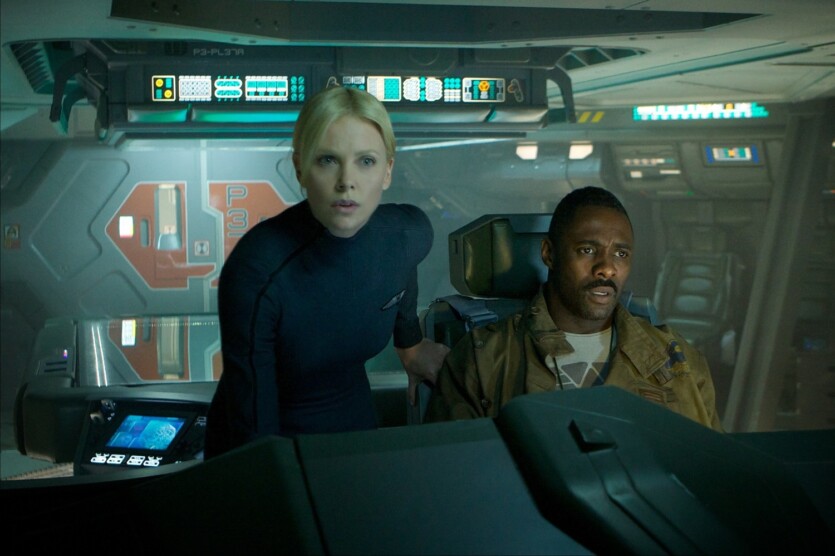
Interesting facts:
- The opening scene, which showed the Engineer sacrificing himself to create new life on the planet, featured the Dettifoss Waterfall, located in Iceland and considered the most powerful waterfall in Europe;
- The names of all the androids shown so far are in alphabetical order: Ash came first, then — Bishop, followed by — Call, and then Prometheus featured David.
Alien: Covenant
Year of release: 2017
Director: Ridley Scott
Cast: Michael Fassbender, Katherine Waterson, Billy Crudup, Danny McBride, Damian Bishir, Carmen Ijogo
IMDb rating: 6,4
The Alien type: silly
In 2015, Neill Blomkamp expressed his readiness to continue the story of Alien. He shared several concept artworks with the audience, and the plan was to create a story set after Cameron’s Aliens. Sigourney Weaver was also interested in the project, but the studio relied on Ridley Scott’s planned prequels. And apparently in vain.
But there was no stopping Sir Ridley; at one point, he wanted to abandon xenomorphs entirely. But based on the experience of Prometheus, the space soil was brought back into service. The script was written by John Logan, who had previously worked with Scott on Gladiator (2000). He noted that he tried to combine the horror elements of Alien with the deeper philosophical themes of Prometheus. All these compromises and attempts to combine the incompatible led to disaster.
The Covenant clearly shows the filmmakers’ attempts to shove a biblical and philosophical parable into the story of another confrontation between frankly inept idiots and a xenomorph, but the two components get along surprisingly poorly. In the end, the story is about anything but the Alien, who now appears to the viewer not as an ominous creature ready to rush at you from around the corner, but as a pathetic puppet. The space monster is also not scary because the action has grown in scale, so the danger in the tight dark corridors has left the chat room.
Instead of marveling at the greatness of the Alien, we are invited to enjoy the greatness of Michael Fassbender — a meaningful inspired flute playing will be the culmination of a pseudo-intellectual abuse of one of the greatest movie monsters in history. It’s clear that Ridley Scott was not interested in making an ordinary horror movie about an acidic creature and a new fearless warrior, but unfortunately, the desire to add depth to the series led the creators somewhere else. The new Alien species, the neomorph, doesn’t impress against the backdrop of the content mess either.
The film was both criticized and praised by critics, but in terms of box office, it was a failure — with a budget of about $100-110 million, it managed to collect only $240 million, which is not enough to pay for itself.
- Katherine Waterson and Michael Fassbender reunite on set after starring together in biographical drama Steve Jobs (2015);
- The main filming took place in Milford Sound, located in New Zealand’s Fiordland National Park.
Newest projects (from 2024)
Alien: Romulus
Year of release: 2024
Director: Fede Alvarez
Cast: Kaley Spaney, David Johnsson, Archie Renault, Isabela Merced, Spike Fearn
IMDb rating: 7.1
The Alien type: authentic
In 2019, Fox was acquired by the Walt Disney Company, after which it announced the development of new projects in the Alien universe. The first of them was Alien: Romulus, whose authors relied on a return to the origins in the spirit of the original film with numerous references to seemingly all of its predecessors (albeit with outright inflections like the kringle android of the same model as Ash). Such an approach a priori leads to secondary nature, but the mass audience, despite a number of obvious flaws, accepted the rules of the game.
Therefore, Romulus can be considered an unqualified success, no matter how one treats it: critics have taken to the movie positively, it has made money earned enough, it was second only to Prometheus in terms of grosses (but it also spent much less), and these are key indicators for today’s film business. In this context, I will allow myself to quote my own review, when there was no information about the box office yet:
“As a space horror, the movie works to the fullest. As a fresh take on the franchise, it’s a questionable idea. So if you’re ready for another run through dark, cramped corridors, enjoy the movie. If not, even if it is a box office success in Hollywood, no one will hear your cry anyway.”.
Interesting facts:
- The Guardian reviewer Wendy Eid gave the movie 4 stars out of 5, but sharply criticized the use of a digital copy of the deceased Ian Holm, calling the idea “disgusting, exploitative, disrespectful and unnecessary.”
- In June, Fede Alvarez saidthat the pre-production of the sequel is in full swing, and shooting is scheduled to begin in October.
Alien: Earth
Year of release: 2025
Showrunner: Noah Hawley
Cast: Sidney Chandler, Alex Lauter, Samuel Blenkin, Essie Davis, Adarsh Gurav, Keith Young, Timothy Olyphant
The Alien type: not yet known
Joss Whedon had planned to send the xenomorph to Earth after Resurrection, but it was decided to realize this idea only now (even though he has already been there in the crossover). The events will take place two years before the original Alien. Showrunner Noah Hawley noted that the series will gravitate towards the style and mythology of the first film, rather than the philosophy of Scott’s prequels. Also was reported we will be shown new creatures and different types of artificial people, because the viewer missed the effect of novelty.
According to FX Entertainment President Gina Balian, the production scale is Alien: Earth significantly outperformed production of a hit Shogun with a budget of $250 million. This is truly impressive. It adds to the optimism of the the highest rating in the franchise since Cameron’s Aliens — at the time of writing, it had a 91% freshness rating on Rotten Tomatoes based on 44 reviews.
Interesting facts:
- Filming was postponed in March 2022 due to the coronavirus pandemic and suspended in late August 2023 due to the SAG-AFTRA strike;
- The series’ setting will feature three types of artificial humans: cyborgs, synthetics, and hybrids. The latter will appear on the screen for the first time and will be a synthetic body with human consciousness.
Conclusions
To say that Alien is a cult film series that has won millions of fans around the world is an understatement. It is a vast and complex universe that is not limited to films, as the brand exists as a media franchise that includes novels, comics, video games, as well as a number of short films and the animated web series Alien: Isolation, which is based on the 2014 video game of the same name (which, by the way, was also inspired by the creators of Romulus). Not to mention that some of the films have extended and/or director’s cut versions.
The series has experienced both ups and downs, but this is an absolutely normal process for any long-term project, and Alien turned 46 this year. Recently, Sir Ridley Scott announced about leaving his brainchild:
“Where the franchise is now, I think I’ve done enough. And I just hope it continues,” the director said in an interview with ScreenRant. Who knows, maybe it’s for the best.
Be that as it may, the story of Alien does indeed go on. And none of the new wave of filmmakers will be able to take away the best representatives of the series, which has become not only a recognized classic of world cinema, but also gave us one of the greatest movie monsters and one of the coolest protagonists, who defined the image of the action heroine for decades to come.
You may have wanted to complain in the comments that the article did not mention the notorious Weyland-Yutani Corporation, but I’m corrected in time — it is a full-fledged local antagonist. Or maybe something important was really missed here, because in this rich universe it’s extremely easy to miss a detail — write about it in the comments. And don’t forget to mention why you fell in love with this monster movie franchise in every sense.
He may be called an Alien, but for us, the audience, he has long been like a family member. No wonder the crazy doctor in Resurrection keeps trying to kiss the creature.

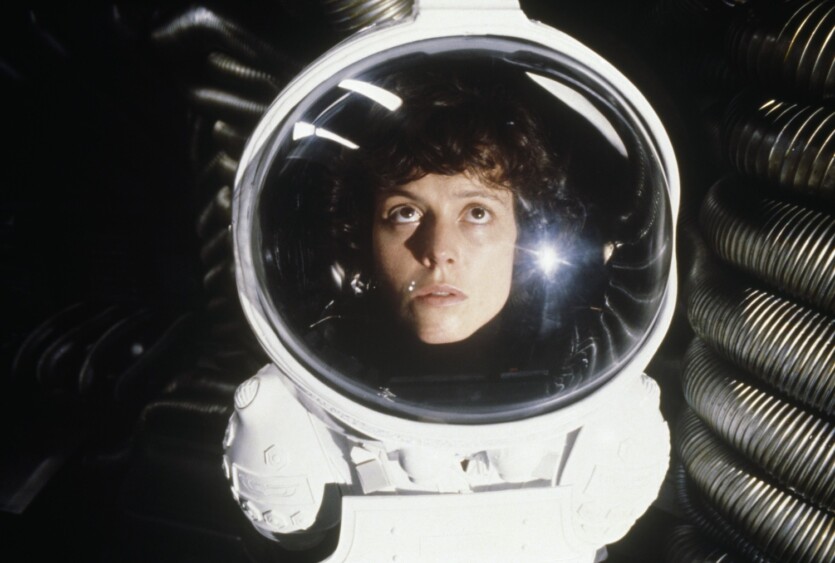
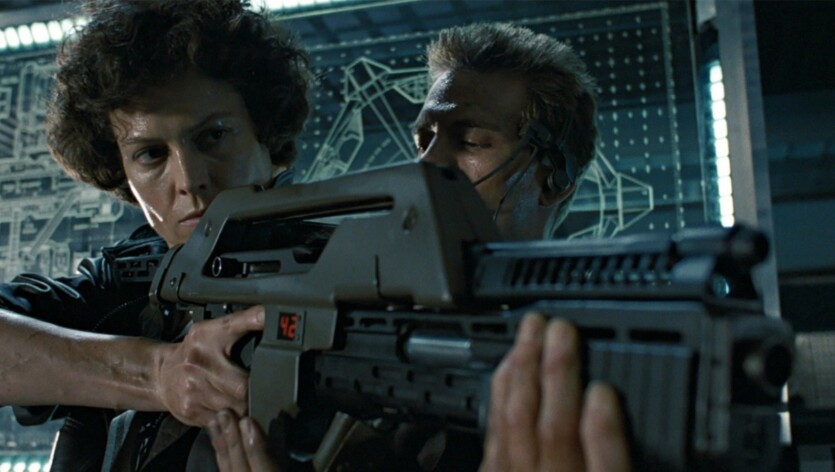
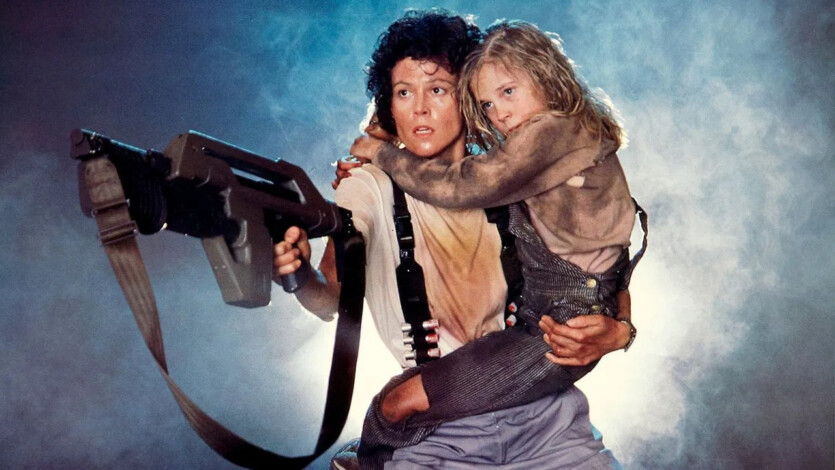
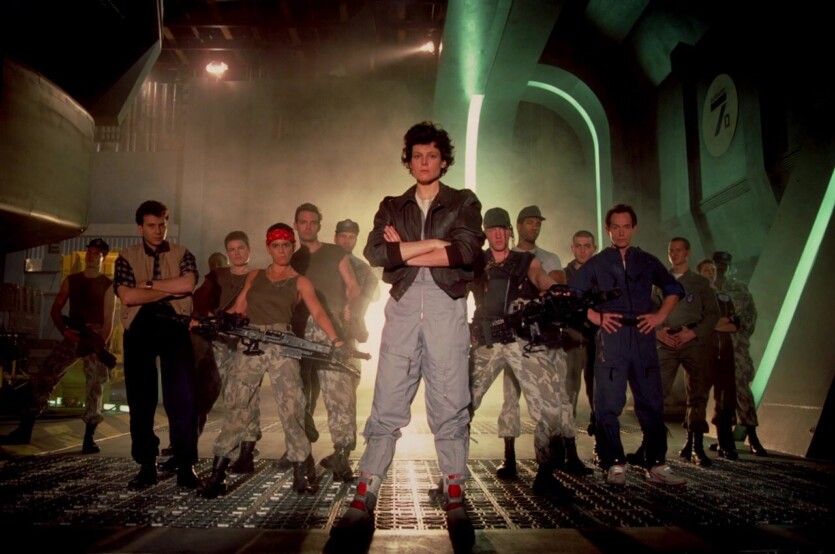
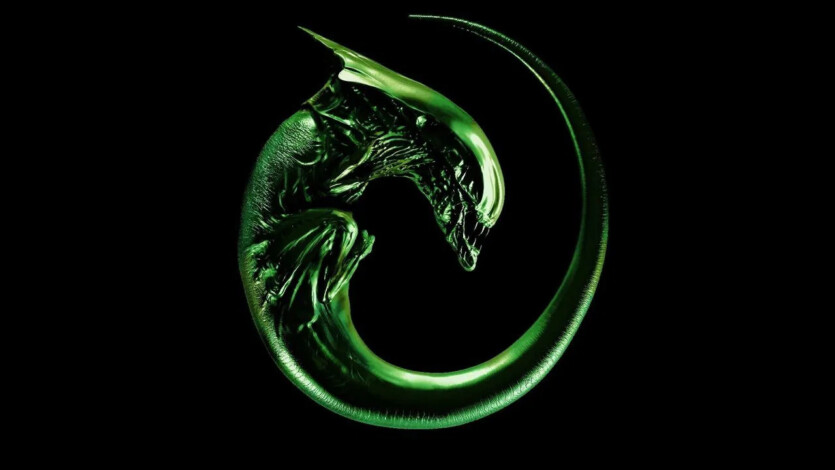
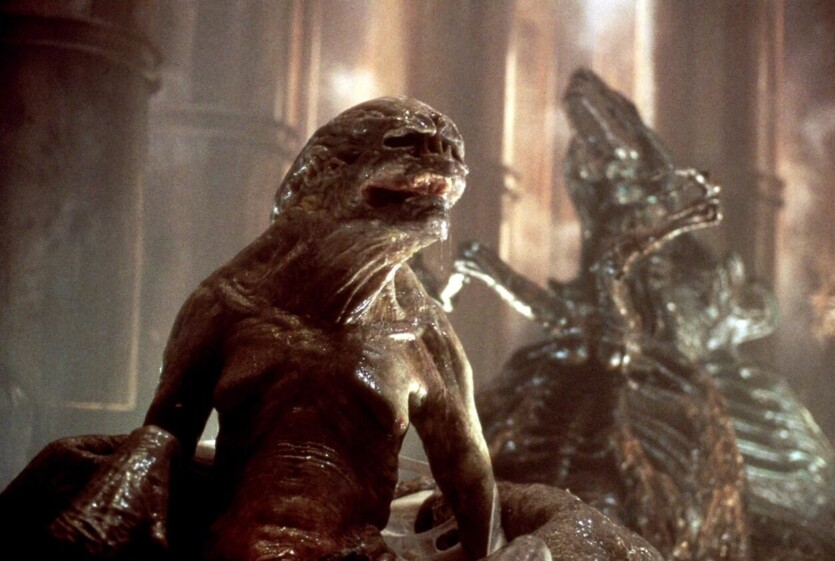
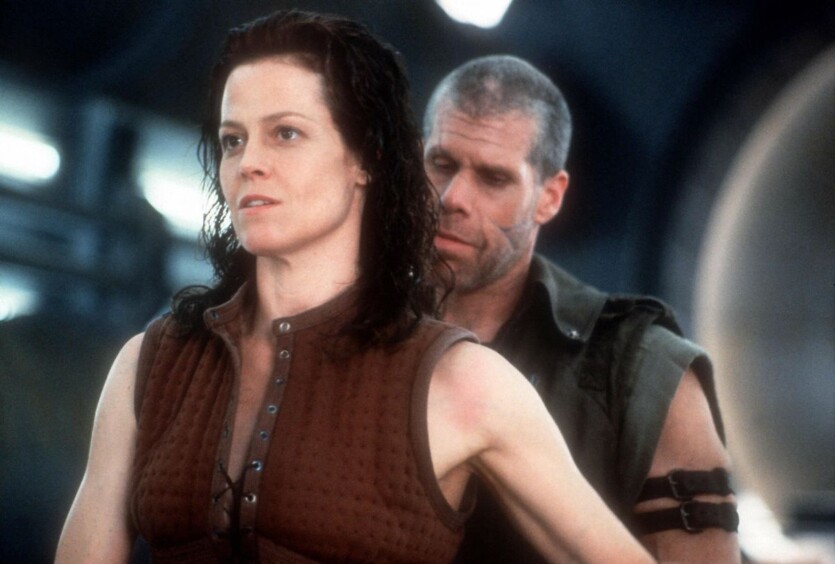

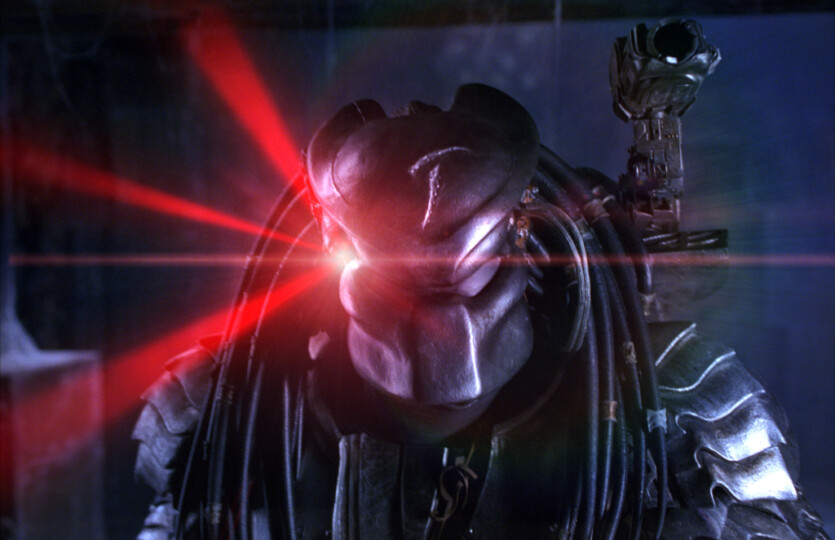
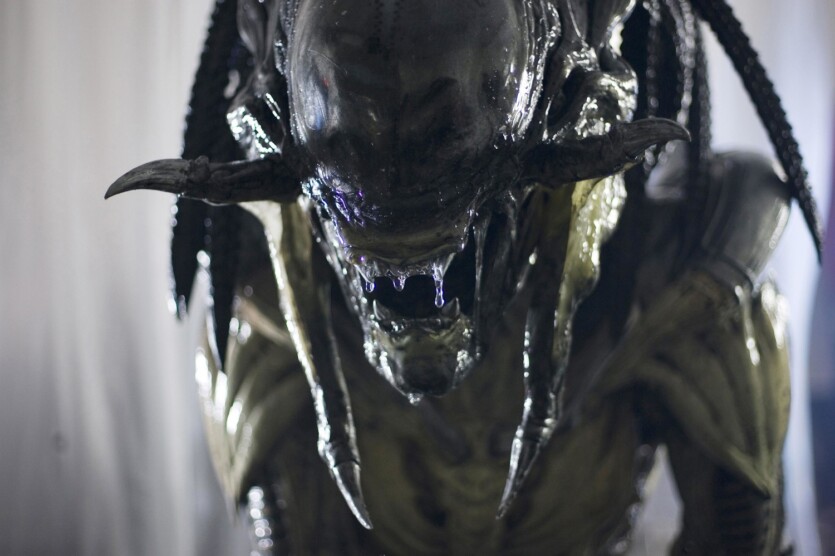

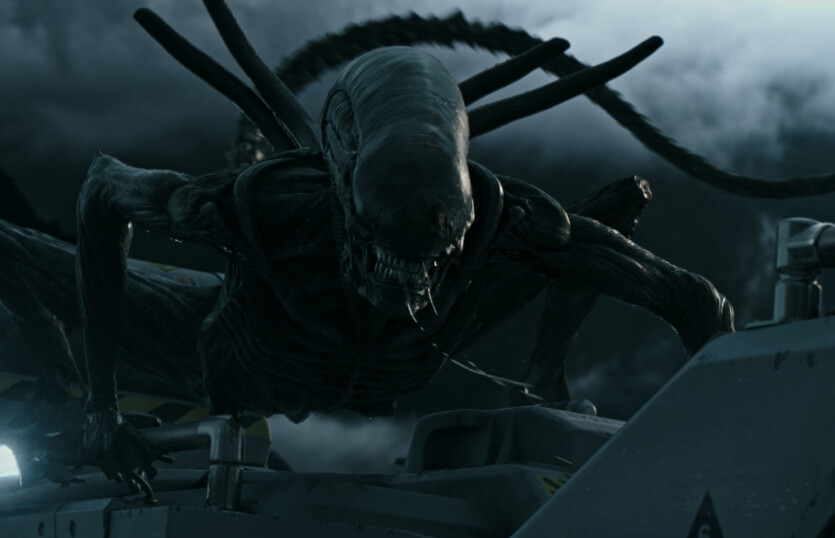
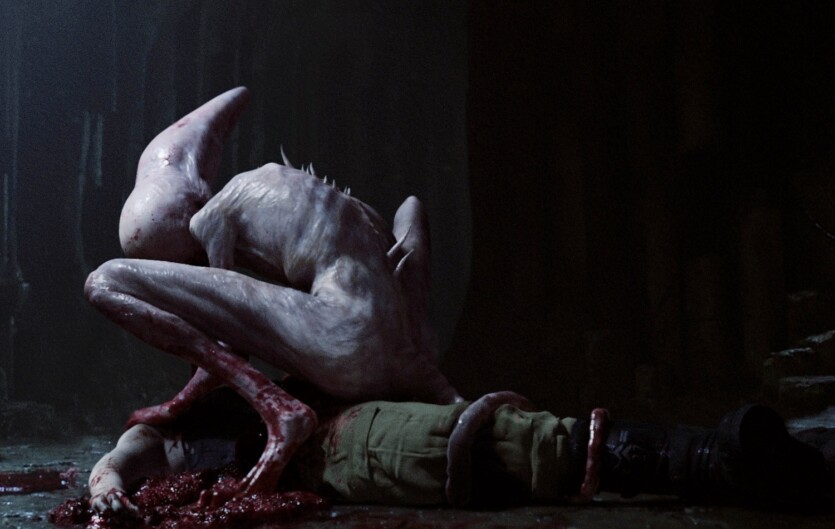
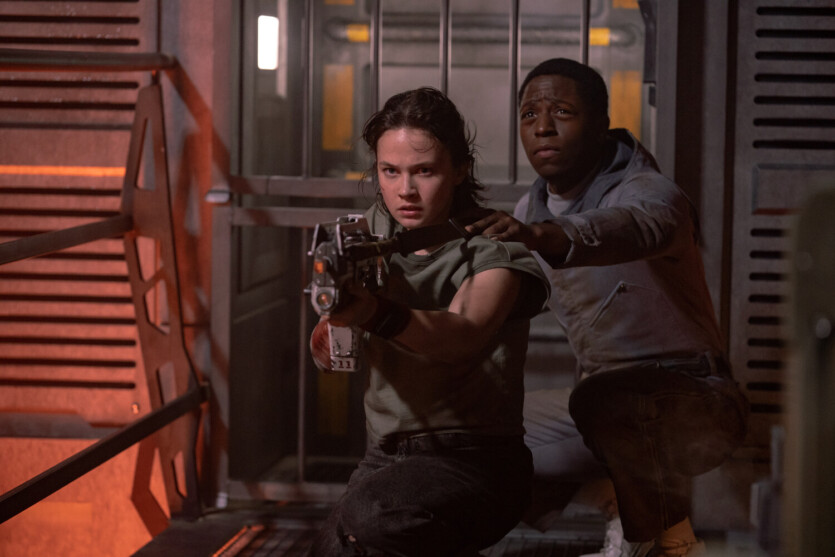
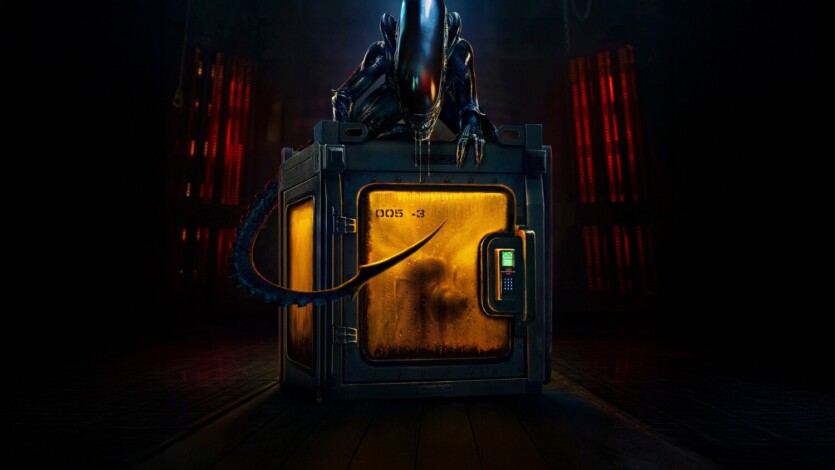
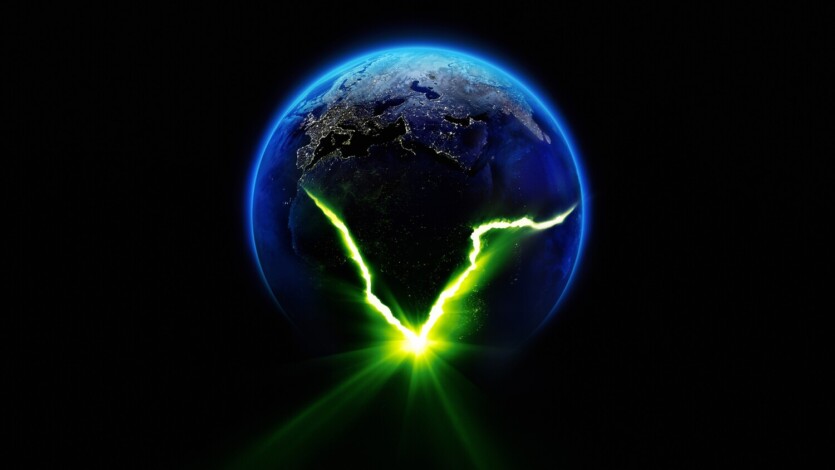

Spelling error report
The following text will be sent to our editors: